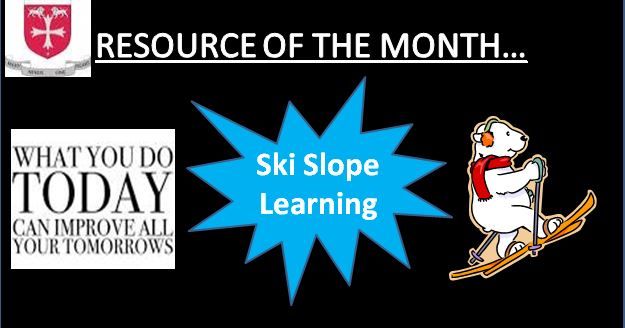PPPB – Pose, Pause, Pounce and Bounce
Resource sourced from @TeachersToolKit
Can you find your inner Tigger and bring it to the classroom?
Can you do ‘what Tigger does best’ and bounce?
PPPB is a simple but sophisticated AfL questioning technique
to help teachers move from good to outstanding practice. It readily addresses
the issues of differentiation and encourages teachers to take the risks and put
the ownership of the lesson onto the pupils. The teacher is the facilitator
within this technique and helps tease out understanding.
The technique stems from Winnie the Pooh….
Which Winnie the Pooh Character are you in relation to
questioning techniques?
Pooh-bear
Despite being naïve and slow-witted he is a friendly and
sometimes insightful character who is always willing to help his friends and
try his best. His good intentions can sometimes make things worse and other
times solve a problem.
Owl
Owl believes that he is the most
intelligent animal in the wood and most of his friends agree, but he is really
quite scatter brained. He often rambles on into long-winded speeches and
frequently uses words that his friends don't understand.
Rabbit
Rabbit is friendly but arrogant
and irritable friend who thinks himself the smartest animal in the Wood. He
insists on doing things his way and is obsessed with rules, planning and order.
Kanga
Kanga is a kind-hearted, docile
and motherly character. She takes great care of Roo, and is constantly
concerned with his well-being, whether that means caring for him or trying to
keep him out of trouble.
Eeyore
Ever-glum, slow-talking, sarcastic
and pessimistic donkey friend who has trouble keeping his tail attached to his
bottom.
Piglet
He is a kind, gentle and small
animal who is ordinarily quite timid, but with Pooh by his side, he often
overcomes his fears.
Tigger
He loves to bounce, especially
bouncing on others. He is full of energy, likes to have fun and is so
overconfident that he thinks that any task is "what Tiggers do best".
Why use PPPB?
The strategy encourages teachers to take risks and tease out
the “learning” in the class. It takes away the closed questions that commonly
happen within classrooms and provides an easy way to present open questions. It
is also a useful way to differentiate learning experiences and differentiating
objectives by varying your questioning techniques.
How does it work?
1. Pose
Make the class aware of the new approach to
questioning. Insist on pupils hands being down before the question or a series
of questions are delivered, ensuring that you ask the students to remain
reflective. Pose all questions to the whole
class and not individuals.
2. Pause
The difficult part, you need to stop
talking and ask the class to hold the thought and think and rethink their
opinions and ideas. If the students are on board and captivated take a
calculated risk and try holding the silence for a little longer. Push the
boundaries and keep the pupils reflecting for as long as possible.
3. Pounce
Plan in your mind that you are going to ask before speaking with the class.
Then pounce and insist the answer to the question comes from student A or student
B, directly and as fast as possible. Nip any comments or noises from other
students in the bud and hold a captivated learning audience. If a pupil is
struggling decipher the support needed and potentially bring in student B to
help.
4. Bounce
This is the important, key and fun part… Ask another student their gut reaction
and opinion to student A’s. This is when the bounce begins and irrespective of
whether student A’s answer is correct or incorrect the pupils in the classroom
are debating the key idea.
Ensure that all your students
understand ‘a’ concept. Test it before moving on. Try it tomorrow. Don't accept
student E or student K shouting out the answer to maintain pace or behaviour.
Don't allow student T to answer the question because (you know they won't let
you down and) they will help you move on during an observation lesson!
Danielle Bartram
Resource sourced from @Teacherstoolkit















0 comments :
Post a Comment